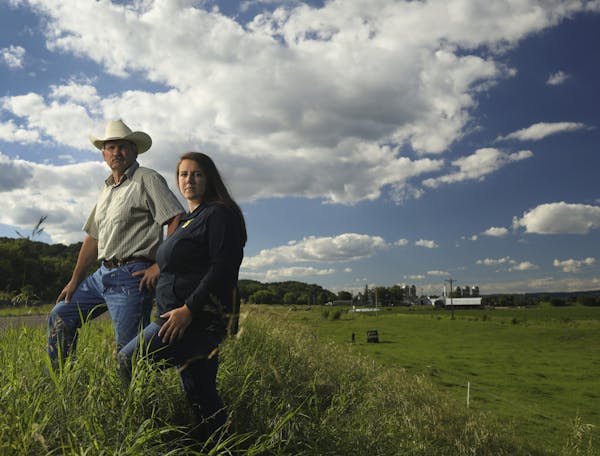WABASHA, MINN. – A controversial plan for dredging the Mississippi River is getting a second look from the U.S. Army Corps of Engineers after a strong lobbying effort by community members and local, state and federal officials.
"So far, the people from the corps have seemed very open to our suggestions," said Craig Falkum, a Wabasha City Council member. "We're keeping our fingers crossed. It ain't over 'til it's over."
This summer, the corps unveiled a draft plan for dredging an 11-mile stretch of river near Wabasha, a town of 2,500 about 85 miles southeast of the Twin Cities. The dredging would remove more than 7 million cubic yards of sand and silt from the river over the next 40 years. Corps officials said it was needed to keep a minimum channel depth of 9 feet for river barge traffic.
The proposal called for trucking most of the sand about 3 miles south of town and dumping it on 298 acres of farmland owned by Willard Drysdale. The Drysdales are a fourth-generation farming family who raise registered breeding cattle on their land. Under the proposed dredging plan, their farm would be covered in sand 15 feet deep.
Wabasha city residents were alarmed by the potential for a massive trucking operation that would send hundreds of dump trucks rumbling through the exclusive Riverdale neighborhood every day during peak dredging season. Hundreds of people attended public hearings on the plan over the summer.
Last week, a delegation from Wabasha met with the St. Paul district of the corps and presented alternatives that would save the Drysdale farm and route truck traffic through less populated areas.
Among them:
• Pipe sand slurry to a site near the high school for removal.
• Use the sand to build peninsulas in Lake Pepin.
• Market the sand to construction companies and other businesses that might be able to use it.
Lawmakers, including U.S. Rep. Jason Lewis, R-Minn., and Sens. Al Franken and Amy Klobuchar, D-Minn., have taken an interest in the issue.
"Shipping on the Mississippi River is vital for Minnesota's economy," Franken said in a statement. "I'm glad the corps is working with local leaders to find more workable sites for the dredged material, and hope they can come to a resolution that works for Wabasha."
Bob Edstrom, project manager for the corps, said the agency is happy to work with local stakeholders in creating a final dredging plan. The corps always strives to consider a project as thoroughly as possible, he added.
"We want to identify the knowledge gaps where we need to do more science or data analysis," he said. "We keep going until we find what kind of bubbles up."
Edstrom said the corps is happy to have the sand go to those who can use it. The dredged sand could be offered for free — and people might even be paid for hauling it away.
"We want people to take that material," he said. "We'll beat that drum as loud as we can."
The next step is for the corps to issue a new draft plan, which would be followed by another 30-day comment period. A final plan could be finished by late winter or early spring.
Wabasha appreciates the way the corps has responded to its concerns, said Mayor Rollin Hall.
"We've kept the ball rolling," he said. "I don't know where the hell this is going to wind up. But the negotiations with the corps have been very professional, and I've appreciated how they have handled themselves."
John Reinan • 612-673-7402
8 months in jail for Blaine man who caused 120-mph crash hours after he was caught speeding

Daughter sues St. Paul, two officers in Yia Xiong's killing

